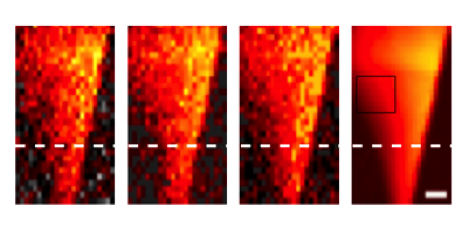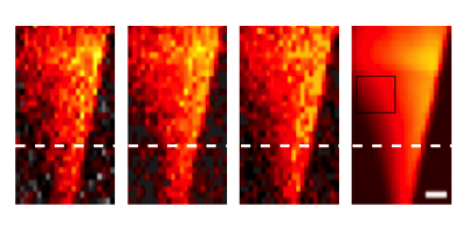A Quantum Microscope at High NOON
At low light levels, microscopic imaging systems suffer from noise as the few desired photons compete with random background. One would normally just turn up the illumination, but this can alter or even damage some delicate samples. A research team led by Yaron Silberberg at the Weizmann Institute of Science in Israel has found one possible way around this with specially constructed entangled quantum states. In a paper in Physical Review Letters, the researchers report a quantum microscope that produces relatively superior images compared to a conventional microscope at extremely low light level.
The researchers used what are known as NOON states, which have two quantum modes (such as vertical and horizontal polarization). In their microscope, two states are formed—one with photons in one mode and the other mode empty ( ), and the other state with the situation reversed ( ). These states are entangled to create the NOON state. And because the image quantum noise goes approximately as , so-called “high” NOON states with are most desirable.
To assess the improvement offered by this proof-of-principle system, the authors used a piece of quartz as a sample and used their microscope to create a 2D image of the phase shift between the two polarization modes caused by its birefringence. The NOON states were loaded with either or photons, and the overall NOON state illumination was limited to photons per pixel (by contrast, a typical digital camera captures tens of thousands of photons per pixel). The noise was reduced to near the ultimate Heisenberg quantum limit. The authors note that this is only a test—a practical system is not here yet because NOON states are hard to create and suffer large photon losses. – David Voss





